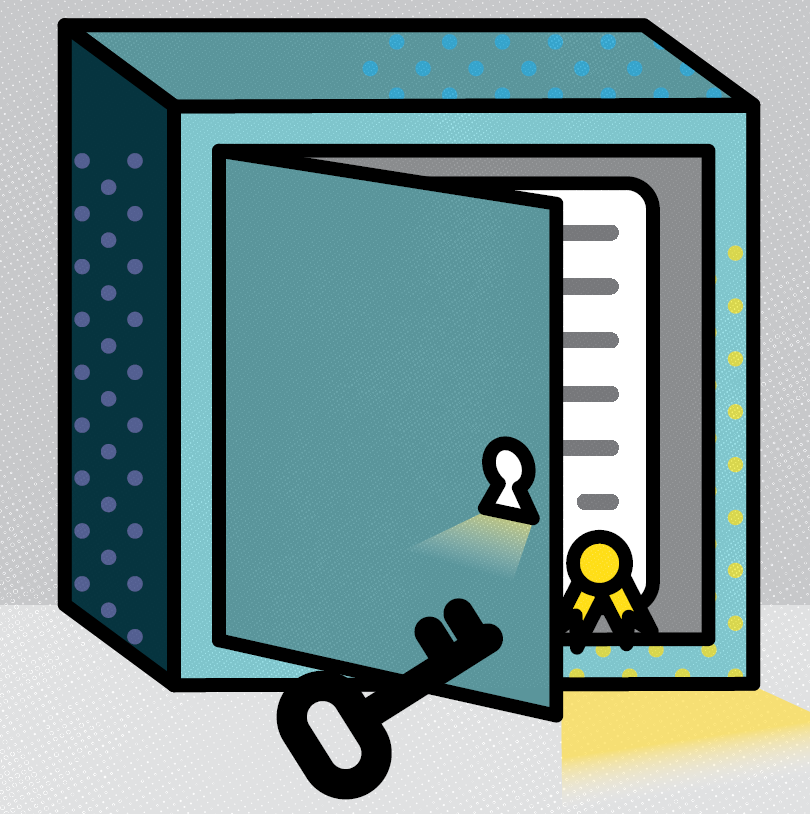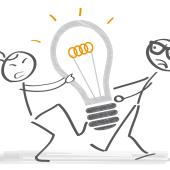
CHEAT SHEET
- File and agree. In the United States, an inventor must file a patent application within a year of any sale or offer for their invention. The goals and milestones for developing an invention should be clearly delineated so that all parties are on the same page.
- Not one, but two. It may be helpful for an inventor to file two patent applications, each with a different claim scope. This can help to clear up any ambiguities that may arise later.
- NDA. Use a nondisclosure agreement with any party who sees your invention prior to filing, and emphasize an intent not to surrender control by disclosure.
- Good recordkeeping. Recordkeeping can help in experimental testing, and it is recommended that documentation reflects the purpose of the experiment and the results of the invention.
Two high-profile patent cases were decided in quick succession by the US Supreme Court and the US Court of Appeals for the Federal Circuit that affect the patent rights of every company. For every in-house lawyer with patent applications considered or pending, these new cases highlight some of the important strategies you need to protect your intellectual property.
The court ultimately found that an inventor who has practiced the patented method for more than a year without filing a patent application did not constitute a public use or a sale.
First, in Helsinn Healthcare v. Teva Pharmaceuticals, the Supreme Court held that a secret sale qualifies as prior art — proof that the invention is already known — under the America Invents Act (AIA), just like it did pre-AIA. Second, in Barry v. Medtronic, the Federal Circuit addressed other facets of the on-sale and public use bars to patentability. The court ultimately found that an inventor who has practiced the patented method for more than a year without filing a patent application did not constitute a public use or a sale. The court found the use was experimental — and therefore not public use, defined in patent law as open use more than a year prior to patent filing — because it was unclear if the method would work for its intended purpose.
Helsinn Healthcare v. Teva Pharmaceuticals
In Helsinn Healthcare v. Teva Pharmaceuticals, Helsinn was developing an anti-nausea drug and entered into two distribution agreements with a third party. As part of the agreements, the third party was required to keep confidential and proprietary information related to the drug a secret. Two years after the agreement, Helsinn filed a provisional patent application related to the drug and subsequently filed numerous patent applications spanning the time period before and after the AIA. Teva ultimately sought approval to market a generic version of the drug, which prompted Helsinn to file suit for patent infringement. Relying on pre-AIA precedent, the Supreme Court held that the meaning of “on-sale” did not change with the adoption of the AIA. More specifically, a sale to a third party, even one required to keep the invention confidential, still may act to preclude patentability and act as a bar under 35 U.S.C. §102(a).
Barry v. Medtronic
In Barry v. Medtronic, Dr. Mark Barry sued Medtronic alleging that Medtronic induced surgeons to infringe claims of various patents related to methods of correcting spinal anomalies such as scoliosis. In defense, Medtronic argued that the claims in the patents asserted by Dr. Barry were invalid due to, among other things, the public-use and on-sale §102 statutory bars, which state that an invention must be patented within a year after their first public use or commercial sale. After developing his spinal correction method, Barry performed spinal surgery on three different patients and examined each patient numerous months later at a follow-up visit. Finally, Barry presented his innovation at a conference and filed a patent application that ultimately matured into the patents at issue.
The court found that the invention was not ready for patenting and the only use prior to the critical date was experimental use, which negated the public-use and on-sale §102 statutory bars. First, with respect to the public use defense, the invention must have been ready for patenting and in public use more than one year before the filing date of the patent.
The test to show if an invention is ready for patenting is either (1) a reduction to practice, or (2) description or drawings that would enable a person of ordinary skill in the art to practice the invention. To show a reduction to practice, the inventor must have (1) performed a process that met all of the limitations or constructed an embodiment, and (2) determined that the invention would work for its intended purpose. Importantly, the court focused on the second prong, noting that Barry did not know his invention would work for its intended purpose until the follow-up visits (after the critical date), and thus, was not able to be reduced to practice. As a result, the court determined that the invention was not ready for patenting because it was not reduced to practice.
Despite finding that the invention was not ready for patenting before the critical date, the court also addressed the question of whether the invention had been in public use more than one year before the filing date of the patent. The court reviewed three factors to determine if the invention was accessible to the public, and therefore in public use. More specifically, the court looked at the nature of the public activity, access to and knowledge of the public use, and if there was a confidentiality obligation imposed on the persons who were involved in the public use.
In finding that Barry’s use was experimental, the court relied on various factors. For one, Barry retained control of his patented method (distinguished from cases where a doctor implanted a device into a patient and did not retain control of their device). He was also the only one to perform his method. Furthermore, the people in the operating room were under an implied duty of confidentiality and/or did not have a clear view of the surgery and understood the surgery was experimental. Finally, Barry earned the same amount of money that he would have earned using other prior art methods, and there was no evidence that the customers sought out Barry to specifically perform the new method.
Ultimately, the court found various aspects of Medtronic’s arguments lacking but relied on the fact that experimental use negates both the public-use and on-sale §102 statutory bars.
Practical considerations for patent filing
Both cases include clear reminders of best practices when it comes to disclosing an invention prior to filing for a patent application. However, these best practices are additional considerations that must be weighed amongst a complex set of factors to determine the best time to file a patent application.
Companies have a strong incentive to file a patent application as early as possible to beat competitors to the patent office because that minimizes the amount of prior art that can be cited against a patent. But there is also a logical reason to delay filing the patent application. Inventors have up to a year from the day of disclosure to file a patent application. If the invention may not be commercialized for years after its creation, strategic thought must be given to maximize the patent term. As the above cases illustrate, there can be a need to ensure that an inventive concept is ready for patenting. Sometimes, it takes years of experiments to identify the details that make an invention functional and commercially viable.
In addition, when considering the right time to file a patent application, corporate counsel need to navigate a morass of patent laws, which vary by country. For global corporations, not only must US patent laws be considered, but also laws in key commercially relevant countries across the globe. While there is a one-year grace period to file a patent application after making an offer for sale or public use of an invention in the United States, in most non-US jurisdictions, it is critical to file a patent application before any public disclosure. If and when an invention was secretly offered for sale is simply not relevant. Accordingly, it is critical to both: (1) file a patent application before any public disclosure, and (2) file a patent application within one year of any offer for sale.
Here are tips for balancing the above interests, while preserving patent rights as best as practical across the globe.
1. File early and often
US provisional patent applications are a cost-effective way to claim a priority date as early as possible. While it is important to include sufficient detail so that one of ordinary skill can practice the invention without undue experimentation, provisional applications do not have all of the formal requirements that regular US utility patent applications include. Accordingly, the attorney fees to prepare a provisional application are often lower than fees to prepare a utility application and the US Patent and Trademark Office’s filing fee is inexpensive.
A utility patent application must be filed within one year of filing the provisional patent application. It claims priority to the provisional patent application, taking over the filing date of the provisional patent application. If no utility patent application claiming priority to the provisional application has been filed, the provisional patent application is abandoned and never becomes available to the public. A US provisional patent application can be a useful tool to provide flexibility in your filing strategy.
For example, a provisional patent application may be quickly filed shortly after invention in order to obtain the earliest possible priority date. Then inventors can conduct experiments, possibly confirming original ideas of how the invention would work, or discover additional details of elements necessary for the invention to function, or discover operational ranges. As new details are discovered, additional provisional applications can be filed. Corporate counsel may decide that all critical details of the invention were included in the original provisional patent application filing and file a utility patent application within a year of the original provisional patent application. That filing would claim priority to the original filing and all subsequent provisional filings. Alternatively, corporate counsel may weigh the risks and benefits and decide it is better to abandon the original provisional patent application filing, and instead claim priority to a later provisional patent filing in order to have a longer patent term. This strategy grants flexibility when critical details are discovered after the original provisional patent application filing, or if there is a decision that having a longer patent term is more important than an earlier filing date.
2. Ensure agreements delineate clear guidance for when an invention is ready for patenting
In the United States, an inventor must file a patent application within one year of any sale or offer for sale of an invention. Before the clock can start ticking on the one year bar, the invention must be “ready for patenting.” In any joint development agreements, it may be helpful, perhaps in a statement of work exhibit, to delineate the goals and milestones for developing an invention and what needs to happen before the parties are satisfied that the invention is ready for patenting. It may also be helpful to include what testing is needed to determine whether an invention would work for its intended purpose, and what the tests should show before an invention is ready for patenting.
As a general rule, receiving payment for an experimental apparatus, device, or method does not necessarily indicate that the use is commercial and not experimental. Rather, payment is acceptable so long as the overall purpose of the experiment is not commercial in nature.
Of course, when a product is developed without a partner, this information can be documented internally.
Documenting such evidence will not guarantee a finding that an invention was not ready for patenting or experimental use, but may provide a basis to support a jury’s finding of experimental use. In order to support a potential fact finder, it may also be helpful to document why such testing is necessary to demonstrate to one of ordinary skill in the art that the invention would work for its intended purpose.
3. Consider filing two patent applications with different claim scope
One proactive strategy that may be implemented is filing a utility patent application with claims covering the inventive product or apparatus itself, and a second utility patent application with claims directed toward a method implementing the product.
In Barry, a significant amount of discussion was directed at the inventor “control” factor that is considered when a court is determining if a use is experimental. In particular, the more control an inventor has over her invention, the more likely the use is experimental. In Barry, the court distinguished situations where a doctor may implant a device into a patient, thereby losing control of her invention, versus a situation where a doctor is the only one performing an inventive surgery (i.e., performing a method).
Even if an apparatus has been publicly disclosed or offered for sale, there may be an argument that method claims directed toward a specific implementation or method of using the instrument, or method of manufacturing the device, were not disclosed, and thus, would not preclude patentability under the public-use and on-sale §102 statutory bars.
4. Use nondisclosure agreements with anyone who sees your invention prior to filing
Most countries require that a patent application be filed before any public disclosure. The above cases highlight the importance of nondisclosure agreements in specific circumstances. When determining if an invention’s use is experimental, one factor that is contemplated is if there is a secrecy obligation placed on any third party who knows about it. Although the secrecy obligation does not have to be explicit (like in Barry), the analysis is much more straightforward if an affirmative duty of confidentiality is agreed upon by the parties before any disclosure. In addition to standard NDA language, it may be useful to include a statement explicitly indicating that the company/inventor does not intend to surrender control by disclosing her invention to the third party, and explicitly stating that the disclosure is for experimental use.
5. Consider offering free or reduced rate products for testing purposes
As a general rule, receiving payment for an experimental apparatus, device, or method does not necessarily indicate that the use is commercial and not experimental. Rather, payment is acceptable so long as the overall purpose of the experiment is not commercial in nature. That said, the safest option is to offer the experimental device, apparatus, or method to a third party at a reduced or free rate. Also, it may be useful to clearly indicate that the price reduction is reflective of the experimental nature of the device, apparatus, or method.
6. Restrict marketing and sales activities until after testing is complete
Internal and external communications about a device or method can explicitly convey the intent and status of a particular invention. For example, if a product is going to be tested with a third party, it is beneficial to ensure that the third party understands and knows that. Internal communications are also critical. They should describe the experimental status of an invention, as opposed to referring to the invention in a similar manner as all other commercial products. Ultimately, it is good practice to delineate commercially available products and those that are undergoing experimental testing vis a vis marketing materials and other written documentation.
On the other hand, product cut sheets, marketing materials, and other sales materials, especially materials that have been made public, counter the idea that the invention is undergoing experimental testing. A company runs the risk of having these materials used against them to show that the alleged experimental use is actually commercial exploitation of the invention.
7. Keep records of experimental testing
Although not dispositive on its own, a lack of recordkeeping related to the alleged experimental use weighs against a determination that the use was actually experimental in nature. In particular, in the course of experimentation, it would be considered routine to keep records that reflect the nature of the experiment, protocols, results, comparisons with other products/solutions, and other routine documentation. Therefore, it is recommended that documentation is prepared to reflect the purpose of the experiment and the results when finished. Relatedly, for certain products, the experimental documentation should be carefully worded so as to avoid potential issues with product liability in the future.
Independent of the guidance above, best practice dictates strategically using US provisional patent applications to put inventions on file before disclosure to any third party. However, experimental use can negate the application of public-use and on-sale §102 statutory bars so long as the disclosure is actually experimental, as opposed to commercial in nature. Not every factor needs to be present for a use to be experimental. Instead, the threshold question is if the inventor is making a good faith effort to test the invention in an experimental way.
Strategically implementing the above factors will help solidify the record and protect your business in the event that someone tries to attack your patents based on either the public-use or on-sale §102 statutory bars.
ACC EXTRAS ON… Patent rights
ACC Docket
Tips & Insights: A Patent for the Future (July 2018).
Five Years Later: Lessons Learned from the First Inter Partes Reviews (May 2018).
Articles
The International Comparative Legal Guide to Patents 2019, 9th Edition (Aug. 2018).





